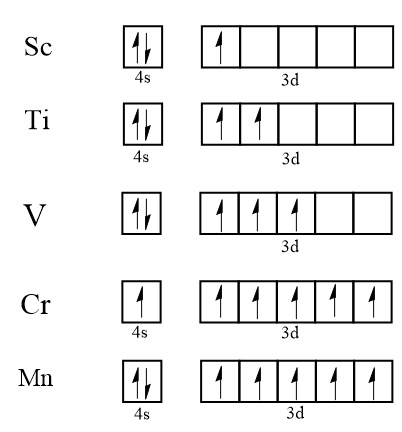Question
Question: Maximum number of unpaired electrons in \( 3d \) orbital?...
Maximum number of unpaired electrons in 3d orbital?
Solution
Elements which have an atomic number from 21 to 30 are known as first transition series or 3d series. This series has ten elements which are Sc , Ti , V , Cr , Mn , Fe , Co , Ni , Cu and Zn . They all filled electrons in the 3d subshell.
Complete Step By Step Answer:
According to the Aufbau principle, electrons first of all fill in the lowest energy orbitals. After filling the lower energy orbitals completely, it moves up to higher energy orbitals. Also, by Hund’s first rule electrons will first fill each empty orbital before pairing with an electron.
d subshell has five orbitals. Maximum number of electrons filled in the 3d subshell is ten electrons whereas the maximum number of unpaired electrons in the 3d subshell is five electrons. When we talk about the single 3d orbital the maximum number of electrons in the single 3d orbital is two and maximum number of unpaired electrons in the single 3d orbital is one. Here is the diagram to show the filling of electron in 3d subshell:

By this diagram it is clear that the maximum number of unpaired electrons in the 3d subshell is five as in case of Mn and Cr whereas the maximum number of unpaired electrons in the 3d single-orbital is one only.
Thus, the maximum number of unpaired electrons in 3d subshell is five and in the 3d single-orbital is one.
Note:
The second rule of Hund states that unpaired electrons in an orbital which are single will have the same spins. If the spins are opposite then the repulsive force increases and thus due to which electrons will separate. If they are in the same direction then they will meet less due to which repulsive force will be less.
